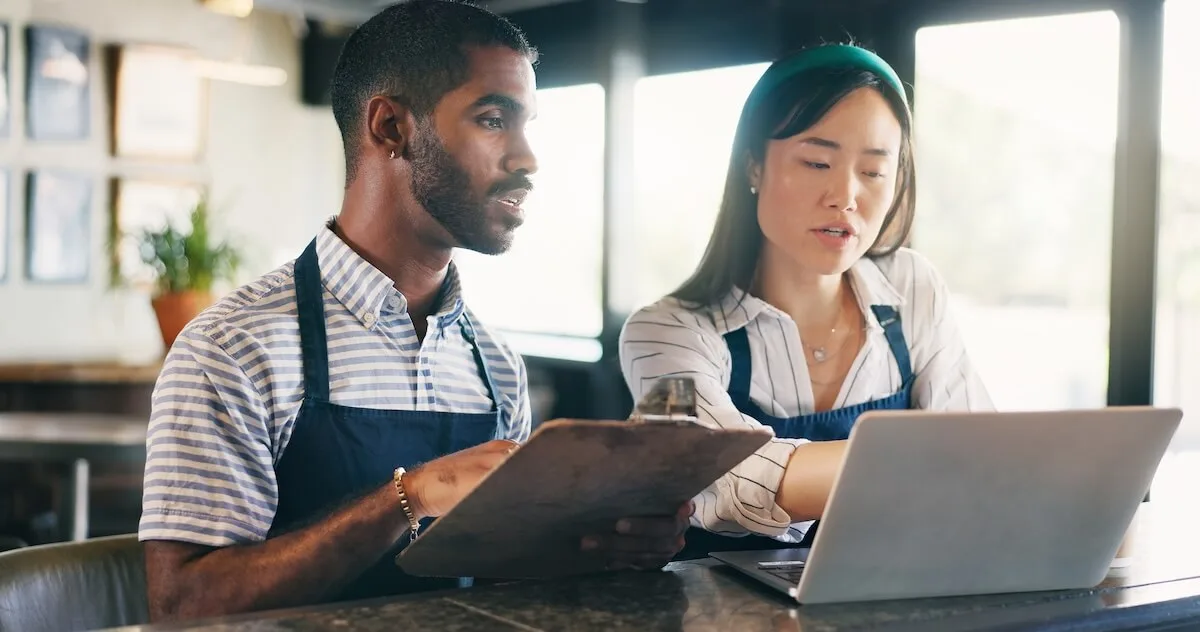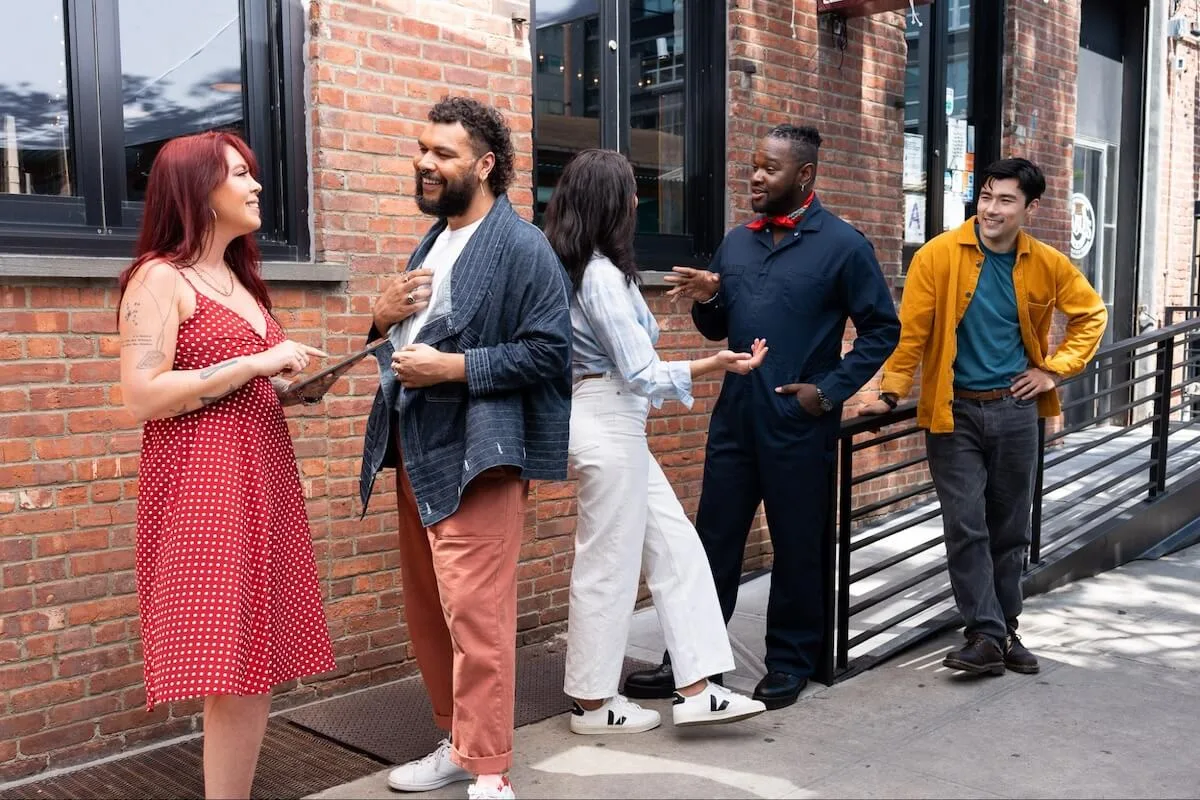How to painlessly switch restaurant reservation software
Skip the article and turn takeaways into action by scheduling a call with our team.
Restaurant reservation software has changed significantly over the last several years, offering more functionality, integrations, and add-ons than ever before. Deciding when or how to choose a new system or swap one out can be tricky, however, as can the learning phase. So, for restaurateurs looking to improve their reservation game—this guide is for you.
Come along with us as we discuss when it’s time to upgrade software, what to look for in your restaurant reservation software, and how to successfully navigate a software change.
5 signs it’s time to upgrade your restaurant reservation software

You probably know when it’s time to upgrade your reservation software. In case you need a little push, these are five bad signs.
1. Operational inefficiency
If you find that your restaurant operations are being impacted by the quality of your reservation software—or lack thereof—it may be time to change.
For example, if you’re seeing bottlenecks in service, a large number of no-shows or cancellations, or a number of negative guest experiences, a new reservation platform may resolve these problems.
If you notice that there’s an unmanageable load for your front-of-house staff due to reservations, giving them some better tools can help navigate the landscape.
2. Integration issues
Reservation platforms can integrate with tons of restaurant management tools, but not all of them do. If you find you or your staff juggling iPads, running back and forth between POS systems, or pulling hair out over gleaning guest data, consolidating your tools can be a lifesaver.
Ideally, you’ll want all your restaurant management platforms to sync for ease of use and while eliminating redundant systems.
3. Limited features
While the bare-bones features of your restaurant reservation system might have worked at the beginning, it can quickly become stifling. While small restaurants may need a limited number of features, restaurants looking to expand will want to improve their tech capabilities.
Consider what you need and, if you don’t have it, look to software options that offer more.
4. Customer service issues
There are two types of customer service issues restaurateurs can run into with their restaurant reservation software: issues on your guests’ end and issues on your end.
Your customers can be negatively affected by glitches in the system, communication difficulties via SMS or other channels, or inadequate features to relay special requests. This can cause them to abandon their reservation altogether.
On your end, a quick way to have a shift ruined is when your software gives you trouble. Glitches, crashes, or other errors mid-service can lead to a real-life kitchen nightmare, and if there isn’t a software firefighter in the form of a real human to come to the rescue, service can go up in flames.
Platforms that offer real human customer support (instead of an AI chatbot) can save the day.
5. High costs
High costs, especially those that eat heavily into profits, can be a significant reason to switch. Steep monthly fees add up. For busy restaurants, the kicker comes in the form of dreaded cover fees.
Before choosing any software, make sure the pricing works for you and fits within your restaurant budget. Consider the cost of any add-ons to a basic plan that certain reservation management platforms offer.
Features you absolutely need in a restaurant reservation software

Restaurants will have different needs for their reservation software, but some core functionalities are vital places to start.
Online booking
If there’s one thing restaurant reservation software needs to do, it’s streamline online booking to the point where it’s nearly automatic.
This includes online reservations via an app or restaurant booking links, real-time waitlist management automation to accurately predict wait times, and a user-friendly interface for both customers and staff. SMS notifications and two-way messaging make for smooth customer interactions.
The waitlist automation offered by Yelp Guest Manager is a game-changer: Guest Manager quotes wait times with up to 96% accuracy.*
Integrations
Integrations make life easier for everyone in the restaurant. The best restaurant reservation platforms will offer POS integrations, sync with third-party online ordering systems, and pair with inventory management tools.
Having all these tools plus table management in one place helps streamline operations and reduce the number of spinning plates restaurateurs have to keep in the air.
Customer management and marketing
A booking system that combines powers with marketing tools will make your life easier. For example, Yelp Guest Manager combines Yelp’s enormous reach with a number of marketing tools like ads and social media booking links. Guest Manager also makes booking easy via Google, Google Maps, and widgets on a restaurant’s website.
You also want a software that can remind your servers of guest data like special events and allergies. If it’s a birthday, anniversary, or a shellfish allergy, you want a CRM that gives you a leg up.
4 steps for a smooth transition to new reservation software

Naturally, adding or swapping a tool in the restaurant business means there’s a learning curve. So, taking the time to learn all the bells and whistles in your new reservation software is crucial. Here’s how to do that without losing your mind.
1. A guiding hand: Onboarding
Most restaurant reservation software comes with an onboarding program. For some platforms, this means video tutorials and little hands-on training. However, many restaurateurs prefer to be able to speak to a real human to guide them through the onboarding phase.
Yelp Guest Manager customers, for example, get a dedicated onboarding manager who’s able to field phone calls and tackle problems immediately. That means a restaurant dealing with a problem in the middle of a busy service doesn’t have to sift through videos or help centers for relevant information.
2. Owner + manager training
You set the tone for how enthusiastic everyone is about a new reservation platform. Ownership and management need to know the system backwards and forwards. This is also when the floor plan and other parameters like the number of walk-ins allowed per time period can be customized.
3. Staff training
Once management is trained up in the software, they can begin training staff to use it. Software use is now a key part of restaurant training, and FOH staff especially should be able to navigate the software without hesitation. How a restaurant decides to train its staff in this regard depends on the size of the restaurant and its particular needs—small restaurants can do one-on-one training, while larger restaurants may benefit from group or online training.
4. Staff cross-training with integrations
Once key FOH staff have been trained to use the software, they can begin teaching other staff members how to use it in case of sick days, employee turnover, or other normal restaurant whoopsies. Ideally, everyone in the FOH will understand how to use the software.
How to tell your reservation system has positive ROI

Once you’ve got your system set up, you’ll want to measure your performance versus the time before it.
Look at reservations and total sales in one month or quarter before the software and compare it to sales and reservations after. If both reservations and sales are up over the cost of the new reservation platform, congratulations: You’ve achieved a positive return on investment!
Continuing to hone your reservation strategy can lead to a significant increase in reservation traffic, a lightened load on your FOH staff, and a better dining experience for customers. A better dining experience leads to more returning customers—and turning new customers into regulars is the best bet for long-term restaurant success.
Get the best bang for your buck
There are a number of different reservation platforms out there: OpenTable, EatApp, Resy, and Tock all command a portion of the market. But we’ve found from our customers that Yelp Guest Manager offers the best bang for their buck—the greatest functionality and the biggest platform reach for the lowest price of all competitors. Yelp reaches 9x more consumers online than OpenTable.**
If you’re looking to upgrade your restaurant reservation software, reach out to us for a free demo. Be bookable by everyone.